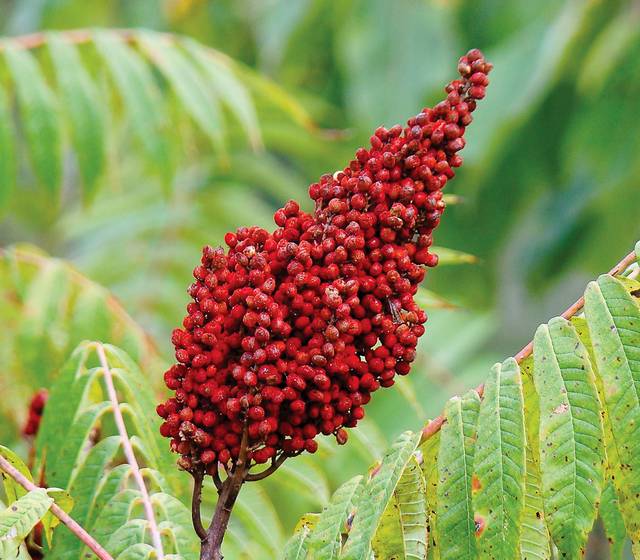Outside: Wild Drinks
Published 7:59 pm Monday, July 29, 2019
Our area’s high plant diversity makes getting outside an adventure, with every trail or country road having something interesting to see, feel or smell. If you’d like to add taste to some of your outings, there are several common plants that provide a variety of flavors to enjoy as a beverage. Here is a rundown of some that I have tried and enjoy. Be sure of correct identification before consuming any wild food and try only a small amount in case of food allergies.
Mountain Mint: this plant is commonly found along roadsides and field edges. It stands around 2-3 feet tall, has spear shaped leaves that look like they been dusted with white powder. The white flowers form in branching clusters and have small flowers a with distinct lip. It gives off a strong mint smell when broken, and like all mints has a square stem. All parts of the plant can be collected to make a very refreshing (and yes) minty flavored tea that can be served hot or cold. The plant parts can be used fresh or dried and stored for later use. This is one of my favorites.
Spicebush: This is a shrub found growing in moist woodland bottoms and along streams. The leaves are thin, dark green, elliptical shaped with a smooth edge. In late summer it produces bright red fleshy berries. The twigs will give off a spicy smell when scratched or broken, as will the berries. The twigs can be collected and steeped in very hot water for 15 minutes and sweetened to taste. The resulting tea can be served hot or cold. My mom taught me about this one.
Sassafras Tea: A traditional mountain beverage that provides a tasty root beer flavored drink. The flavor is in the roots (actually the bark of the roots) and so it’s trickier to collect. Sassafras is an understory tree with leaves that come in 3 different shapes: one that’s a simple oblong shape, one with two lobes shaped like a mitten, and one with three lobes that looks like a trident. The bark is reddish-brown with furrows that are orange-ey colored. The end twigs are green and aromatic when crushed. The routine is to identify the tree and then dig beneath it to seek out the reddish roots. Always wear gloves when handling roots in case there’s poison ivy in the mix. You will know you have a sassafras root because it will be giving off a strong root beer fragrance. Thoroughly wash the roots and boil them until the water turns a rich red-brown and then sweeten to taste. The roots can be dried and reused several times. There is a warning out that sassafras has a carcinogenic chemical in it, but the testing with lab animals was over a long period, so I don’t think an occasional cup of sassafras tea is harmful, just don’t have it every morning. The tea is also proven to lower blood pressure.
Sumac: This is a tall, spindly, multi-stemmed shrub with feather shaped compound leaves and produces clusters of small, dry, hairy, red fruit at the end of branches. Collect a dozen seed heads and rub and squeeze them in a gallon of cold water to release their flavor and then let them soak for 15 minutes. Strain the liquid through a cloth and then sweeten to taste. You will end up with a tart, lemonade flavored drink. I’ve never seen it in our area, but there is a poison sumac that causes dermatitis like poison ivy, but it’s berries are white and only found in swampy places.
A great book on eating wild stuff is A Field Guide to Edible Wild Plants of Eastern North America by Lee Peterson.







